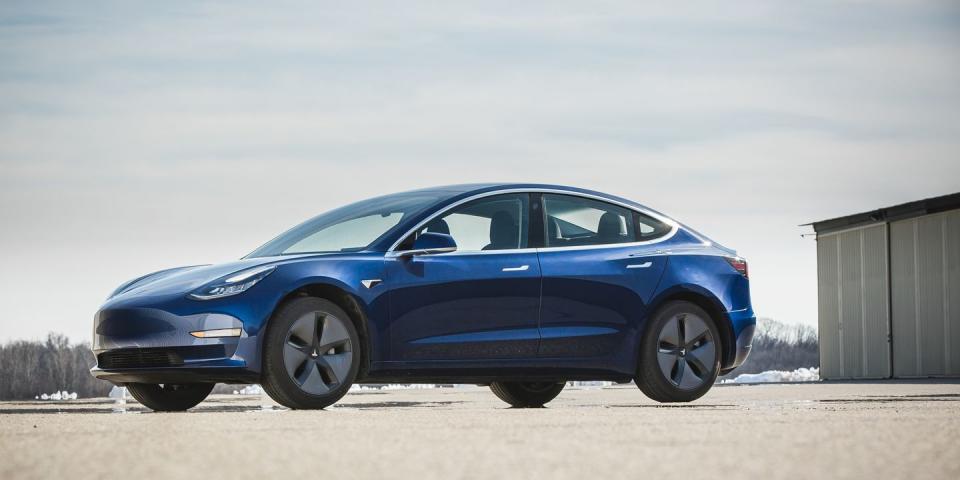Robots Rejected: Tesla Aims to Speed Model 3 Production with More Manpower

Tesla CEO Elon Musk has long been bullish on automation. Yet now he’s calling that evangelism “a mistake.”
The automaker is looking to increase its production output to get more Model 3 sedans out to the hundreds of thousands who have ordered one, and the company appears to be turning to a tried-and-true method: adding shifts and workers. According to what is purported to be an internal email, which was excerpted by several outlets, including Recode, Tesla is now looking to add 400 more people each week for several weeks in general assembly, body, and paint areas in combination with a set of undisclosed upgrades so that the Fremont, California, factory can produce its Model 3 sedans 24 hours a day, seven days a week. The email said Tesla is aiming for a production rate of 6000 vehicles per week by the end of June.
The reported production changes follow Musk’s distinct change of messaging about automation that started last week, when CBS This Morning host Gayle King reiterated a common criticism, that maybe there are too many robots and maybe Tesla needs more people. “Yeah, yeah, I agree . . . we do,” Musk replied, later adding: “We have this crazy complex network of conveyor belts, and it was not working, so we got rid of that whole thing.” That same day Musk confirmed via Twitter: “Yes, excessive automation at Tesla was a mistake. To be precise, my mistake. Humans are underrated.”
Musk also hinted that the slowdowns involve more than automation-also an unexpected admission, since the Model 3 had been developed to be easy to produce. “We got complacent about some of the things that we felt were our core technology,” he told CBS This Morning last week. “We put too much technology into the Model 3 all at once . . . This should have been staged.”
It’s unclear whether the move to add workers and remove some automation had anything to do with the temporary shutdown of the Fremont plant also reported this week. A Tesla spokesperson wouldn’t comment to C/D on the reason or duration of this particular stop but pointed back to the following comment: “Our Model 3 production plan includes periods of planned downtime in both Fremont and Gigafactory 1. These periods are used to improve automation and systematically address bottlenecks in order to increase production rates. This is not unusual and is in fact common in production ramps like this.”
No Longer a Race to the Alien Dreadnought
For Musk, the robot rejection veers sharply away from a script that he had held true to for years-that the more automation Tesla could pack into its production facilities, the faster the company could push production. Just a couple of months ago Musk said, during an earnings call, that traditional automotive assembly lines move too slow-”grandma-with-a-walker speed.” At one point, he seemed to relish the idea of the factory looking like an “alien dreadnought” inside and mused that he wanted Tesla’s production lines to become so fast that air resistance would be an issue.
The CBS report emphasized that Musk personally took over the production line at the beginning of April, and the interview lingered at his conference-room sofa bed, now the subject of a GoFundMe campaign set up by a Tesla enthusiast. The CEO said in the interview that worker overtime is already paying off in allowing Tesla to push past 2000 vehicles a week and that he expects a three- or fourfold increase in Model 3 output in the second quarter. As of this week, Bloomberg News’ Model 3 tracker, which tallies results from government sources, Tesla owners, and social media, estimates that Tesla is averaging 2866 Model 3 sedans per week and has built 17,981 in total.
This calls into question another point Musk made in February: that thanks to automation, the company could get to 10,000 cars per week, and with further increases in robotics, they could reach the 1 million mark in annual production with the company’s existing manufacturing footprint. But compared to the work of robots, human assembly generally occupies more space and costs a lot more over time, putting those lofty goals out of reach-or at least making them further off and more expensive.
You Might Also Like

 Yahoo Autos
Yahoo Autos 

